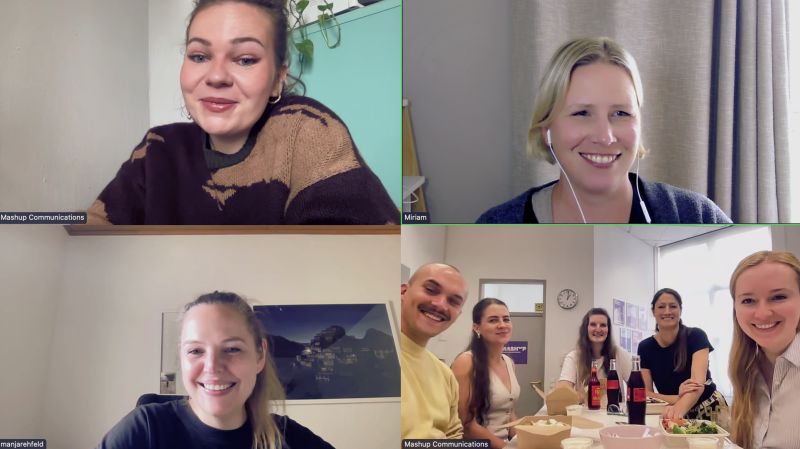Reimagining Team Building: From Silent Sessions to Corporate Campfires
The world of work is changing rapidly. And with it, the way companies bring their teams together. Traditional summer parties and Christmas celebrations are no longer the only formats that shape corporate culture. Today, the focus is much more on genuine interpersonal connections, authenticity, and lasting experiences.

From event to experience: Which team-building formats really count?
Modern corporate and team-building events focus on strengthening a culture of appreciation. The aim is to give employees space in which they can reveal their whole personalities.
Two formats for deeper encounters are, for example:
- Vulnerability Circles: In these circles, employees consciously open up by sharing personal experiences, obstacles, or moments of pride. This not only builds trust, but also breaks down hierarchies, because everyone is heard equally, regardless of their role or position in the company.
- Skill swap sessions: These sessions not only promote knowledge sharing, but also a new awareness of the diversity of talents within the team. This often leads to surprising connections. For example, when a designer teaches programming basics or a developer shares their passion for mindfulness.
The key to success lies less in the event itself and more in a solid foundation of trust and a corporate culture that allows for this openness—often accompanied by experienced external coaches or internal mentors.
Nora Feist, HR Manager and Managing Director of Mashup Communications
Silent Events: Creating Space for Introverts
Not everyone feels comfortable in loud party settings. That’s why silent events are becoming increasingly popular. These can be art workshops, meditation sessions, or even walks in silence. The main thing is that they offer introverted team members the chance to show their strengths without being drowned out.
Another trend: collaborative design instead of celebration. Whether it’s implementing a project, building an installation, or participating in nonverbal creative seminars, collaborative creation leaves behind a tangible sense of achievement.
Storytelling as the glue for real connections

Stories have the power to bring people closer together. With storytelling formats such as our “Corporate Campfires”, teams can share personal turning points, motivations, and even failures. This creates empathy and a deeper understanding that enriches everyday life at work in the long term. These stories can in turn be used for employer branding to communicate the company’s culture and values to the outside world and make them visible to new potential employees.
Five surprising formats for the new world of work
New Work means turning conventions upside down. Some of the most exciting formats currently causing a stir in companies:
- 1. Reverse Mentoring Cafés – Young employees coach more experienced colleagues, creating a genuine transfer of knowledge in both directions.
- 2. Failure parties – Failure is celebrated, not concealed. Teams learn to see mistakes as learning opportunities.
- 3. Time Archaeology – A shared look at work routines to break unproductive patterns.
- 4. Impact Storytelling – Each employee shares how the team’s work has positively impacted other people.
- 5. Silent Innovation Labs – Creative collaboration without words, promoting nonverbal communication and new ideas.
Practical examples: Small rituals with a big impact

Hybrid format: Karma Lunch at Mashup Communications
Events don’t always have to be big. Sustainable momentum can also be generated in everyday working life. Here are three formats that we regularly use at Mashup and which are very popular with the team:
- “Karma Lunch”: Once a month, we strengthen our culture of appreciation with a shared lunch and small conversation starters.
- Internal webinars: In our biweekly creative meetings or biannual team summits, our employees share their knowledge with others and strengthen their self-confidence at the same time.
- Retrospectives: Our Head of Onboarding & Culture, Julia, regularly conducts retro formats in small and large groups to identify sources of energy and energy drainers within the team and establish better working habits.
These formats work because they not only entertain, but also enable authentic encounters and communication on an equal footing.
What should companies pay attention to during team-building events?
Whether large or small, it is crucial that events fit in with the corporate culture. Employees immediately sense whether an event is being held out of genuine conviction or as a compulsory exercise. For events to be truly effective, they need three things:
- Authenticity: Only values that are lived out are convincing.
- Participation: Employees should be actively involved.
- Sustainability: The event leaves its mark, changes habits, and strengthens cooperation in the long term.
Conclusion: Team-building events are successful when they truly bring people together. Whether loud or quiet, creative or reflective, the key is that they fit the culture and create space for genuine encounters.
More on the topic of team building and internal communication:
Share this article
Related articles

20 November 2025








